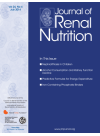The Devil's in the Detail: The Importance of Specific, Descriptive Language for Reproducibility in Nutrition Science
Diabetic nephropathy is a major microvascular complication of diabetes and the leading cause of end-stage renal disease.1 The incidence and prevalence of diabetic nephropathy have been increasing worldwide and interventions that limit the progression of this disease are urgently needed.1 Dietary fiber intake has been shown to reduce serum creatinine and urea levels in patients with chronic kidney disease.2 Resistant starch (RS), a type of dietary fiber, consists of starch molecules that are resistant to digestion by human α-amylases in the small intestine and subsequently are available to act as a prebiotic in the colon, increasing the microbial production of beneficial short chain fatty acids (SCFA).



